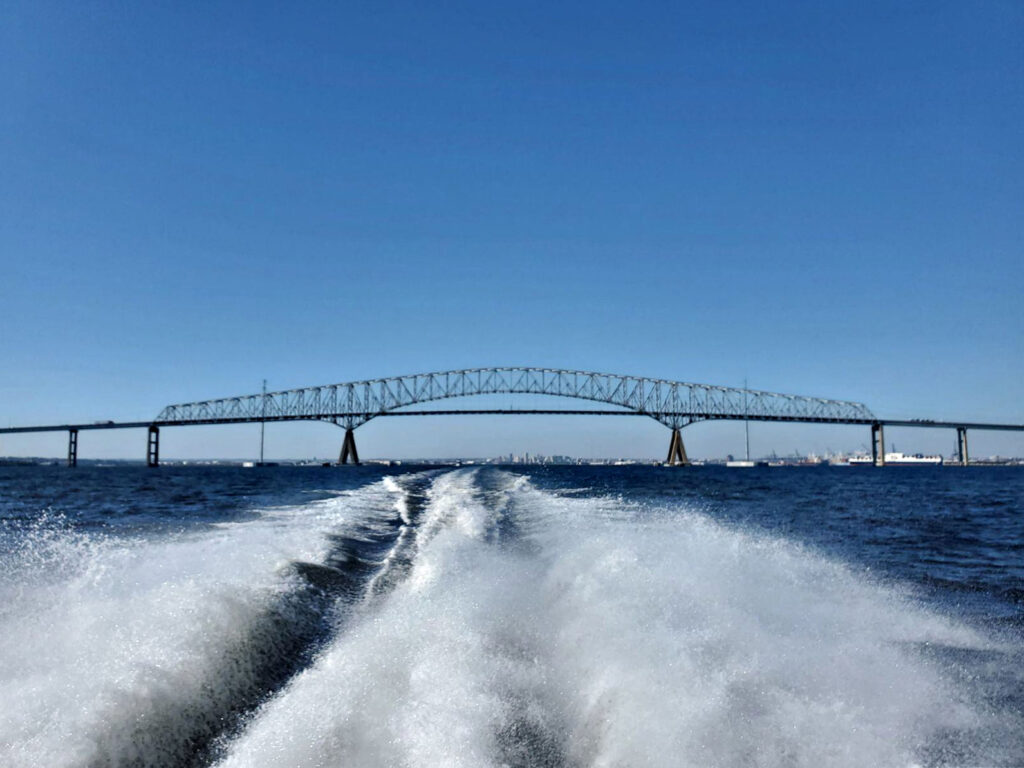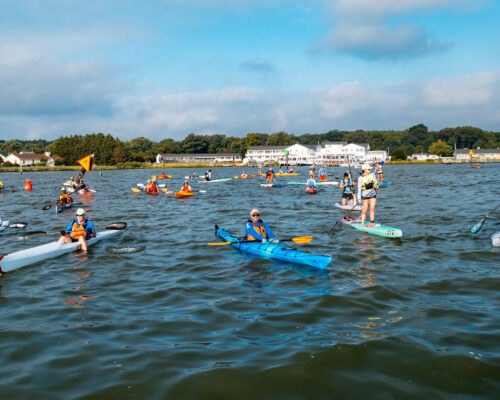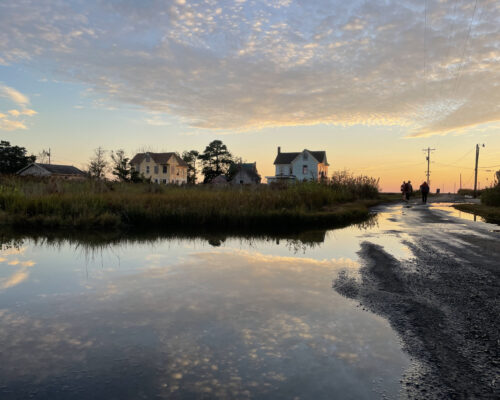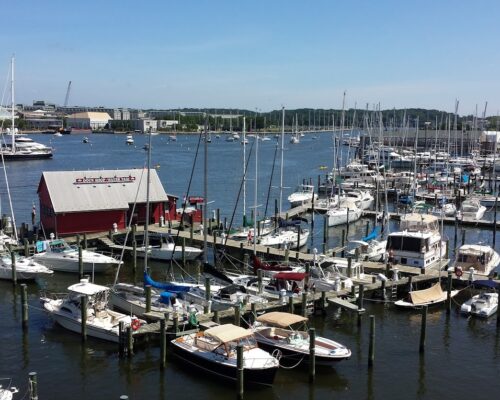When Baltimore’s Francis Scott Key Bridge collapsed in the early morning hours of March 26, the Chesapeake Bay lost one of its most beloved landmarks. For those who have been lucky enough to know the Key Bridge as a waypoint, and not simply something to drive over, the bridge was the backdrop to many adventures, homecomings, and celebrations.
We reached out to members of the Chesapeake Bay boating community who felt a personal connection to the Bridge. For them, Baltimore’s skyline will never be the same.
From Rich Shores, Baltimore City Yacht Association
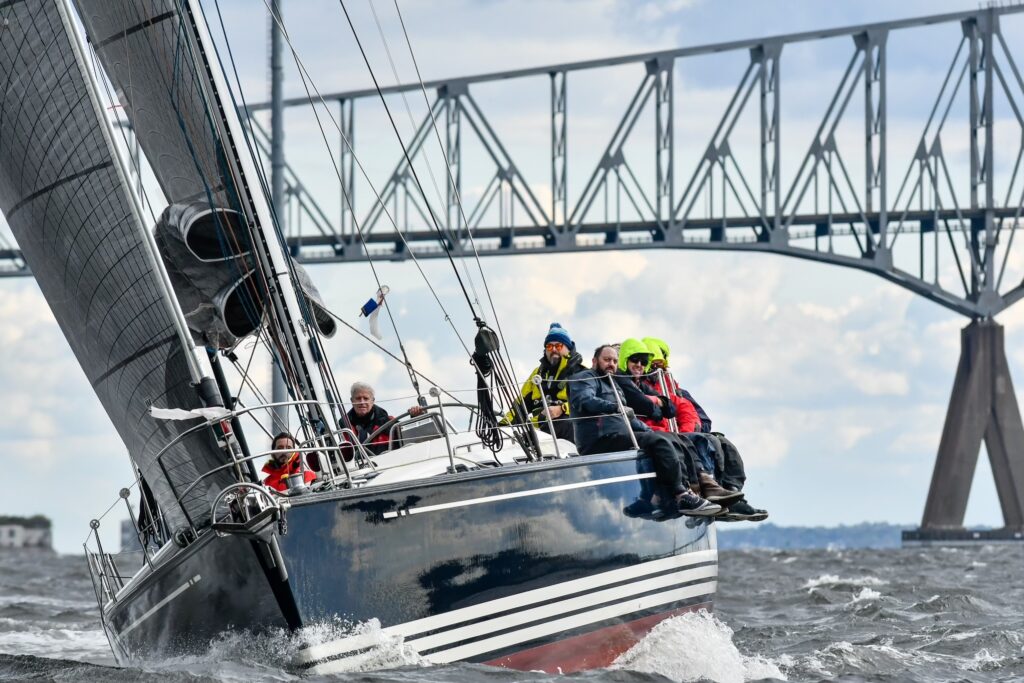
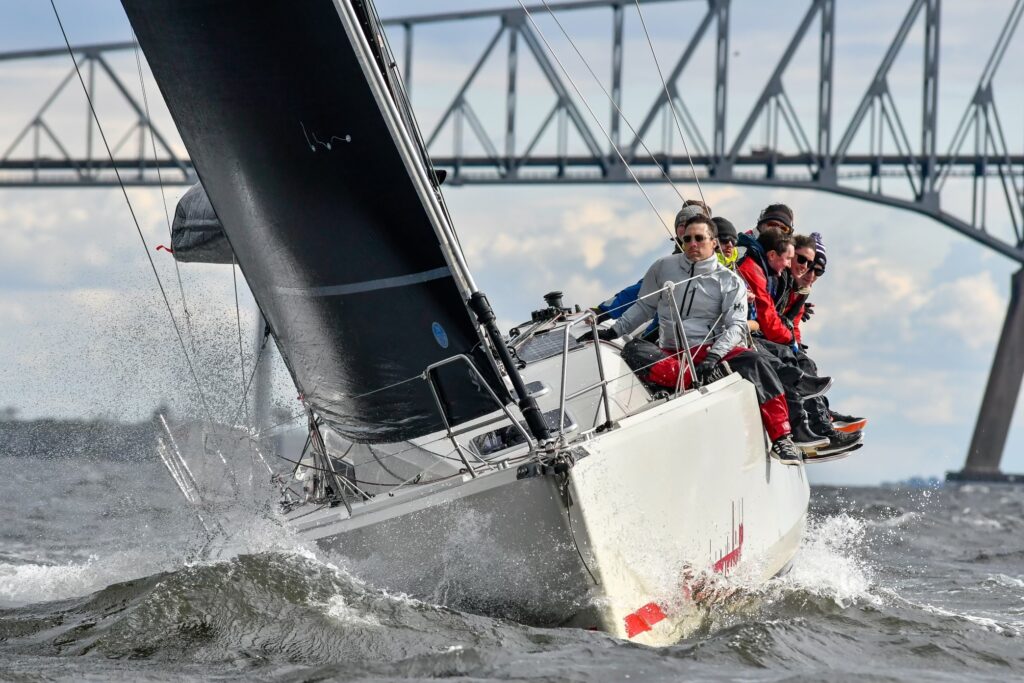
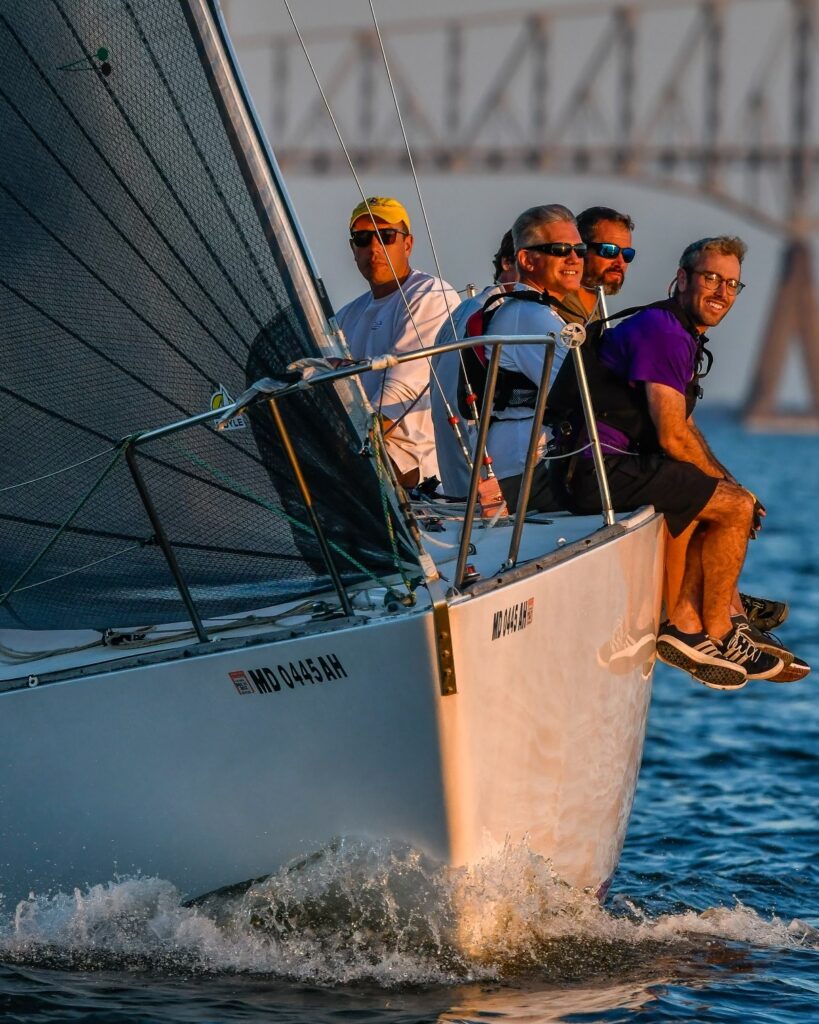
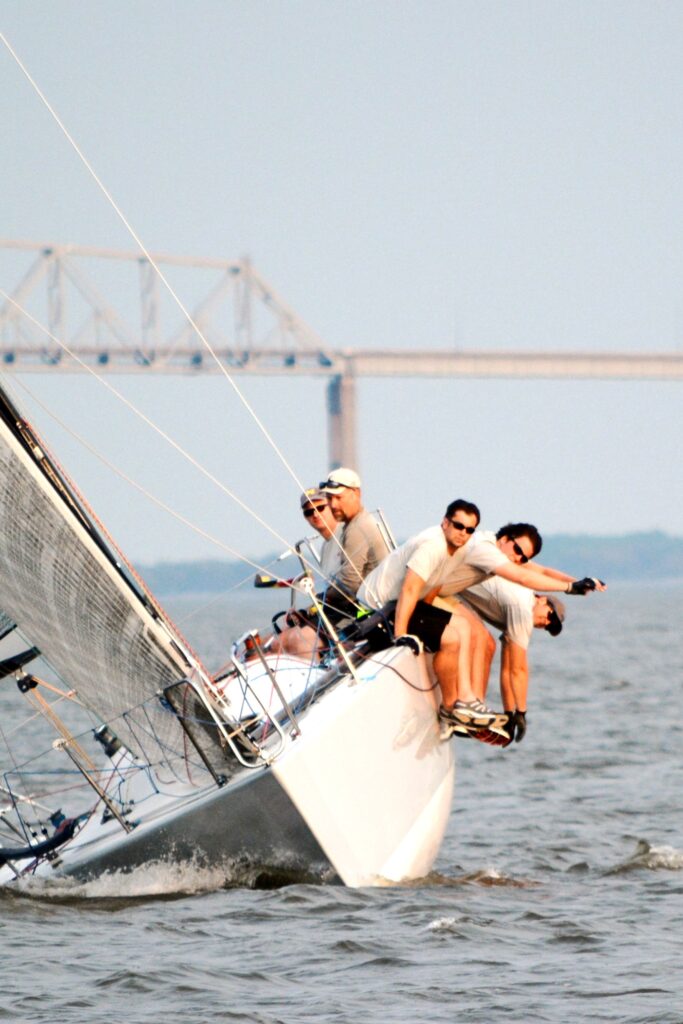
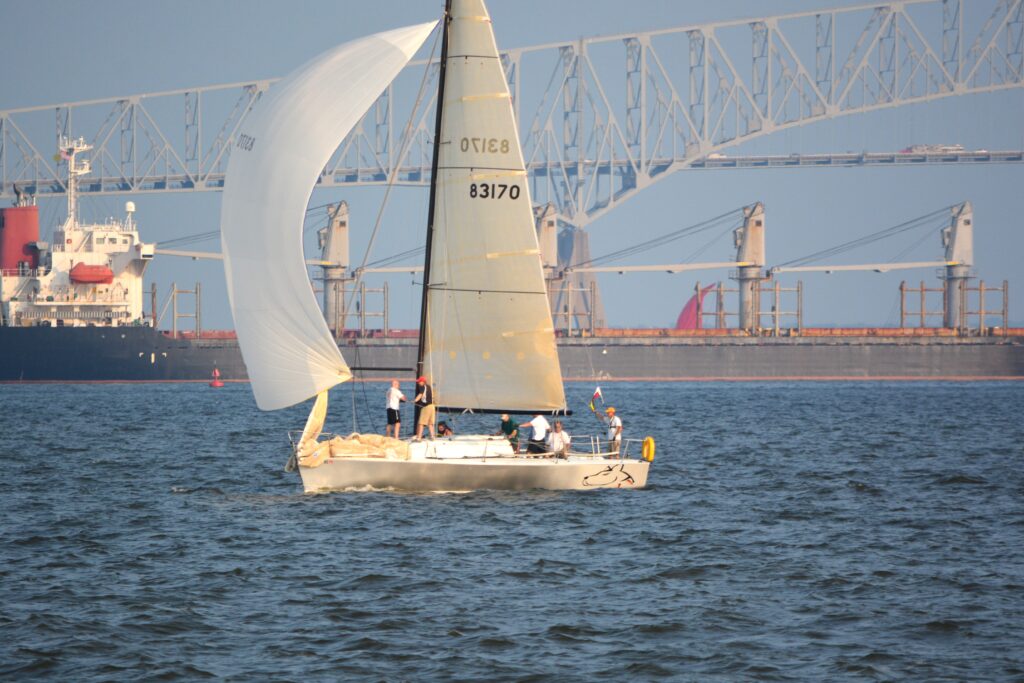
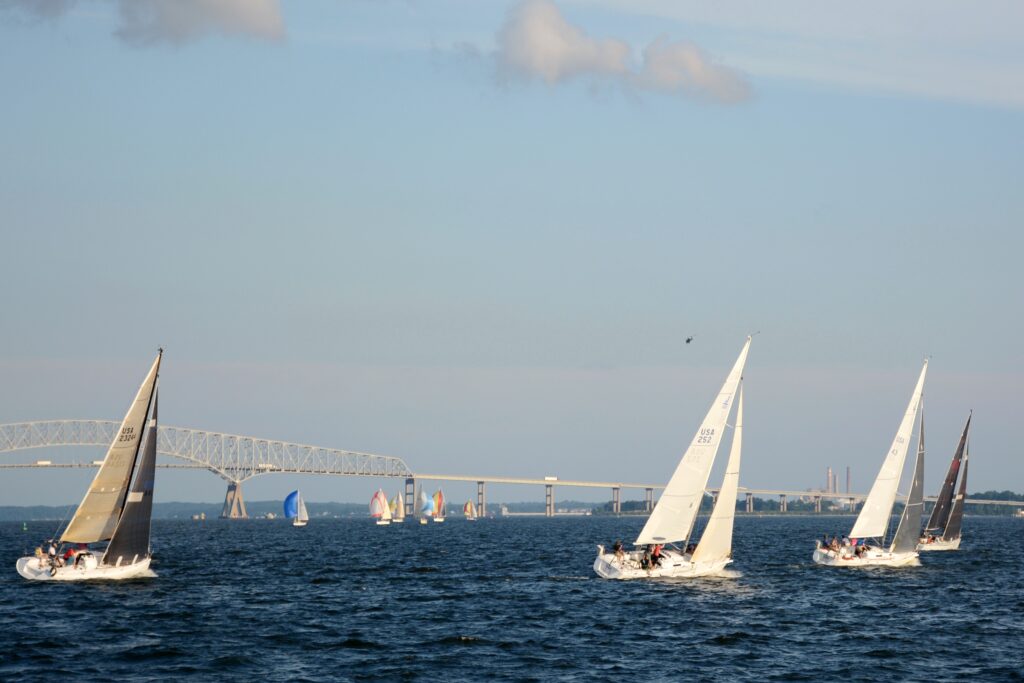
“From Fort McHenry to the Key Bridge, Seagirt and Dundalk to Fairfield and Curtis Bay: Those were the regular borders of our Tuesday night racing area. One of them is now gone. When the wind gave us the option, RC would set a turning mark pretty close to ‘the Bridge.’ Not the ‘Key Bridge’—we didn’t need that kind of formality for such a familiar friend—just ‘the Bridge,’ our Bridge.
“Its pylons were a constant reference point, the ultimate AToN for Tuesday night racing. ‘Is it the buoy to the left or right of the south support?’ ‘It’s under the center right span…’ On our long early morning motor-sails out to the course for a Bay race, the Bridge got a friendly tip of the hat, no big deal, we’ll see you later in the day! But during a Race to Baltimore or Harbor Cup, heading back toward the city, the Key Bridge was always a welcome sight, standing sentinel over the Patapsco. It represented progress on the course, a goal, home port. Finally passing under all that rumbling steel, there was also a sense of relief that we didn’t have much longer to endure being wet, cold, and wind-whipped. Sometimes the bridge would surprise us with a severe wind shift from one side to the other, and the high side of the boat became the low side of the boat before you could move—an unplanned baptism in the Patapsco thanks to the Key Bridge. It will be a strange feeling sailing out of Baltimore and seeing nothing but horizon to the southeast between two disconnected roads to nowhere. We will miss our familiar old friend.”
From Charter Captain Bobby LaPin, Boat Baltimore
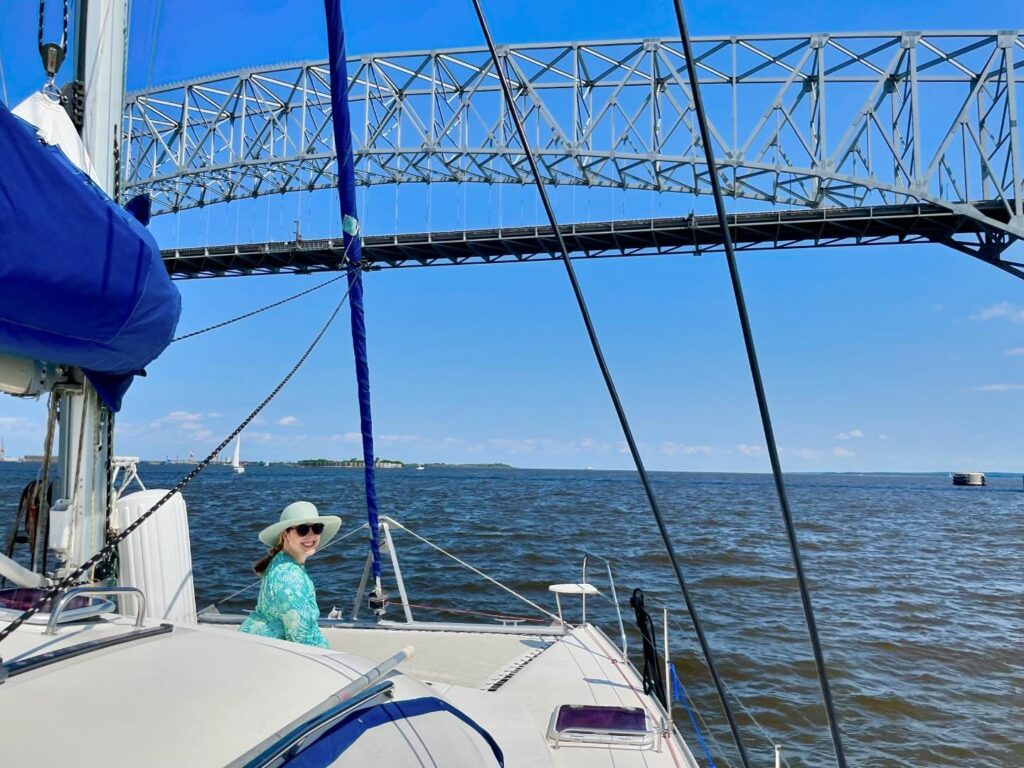
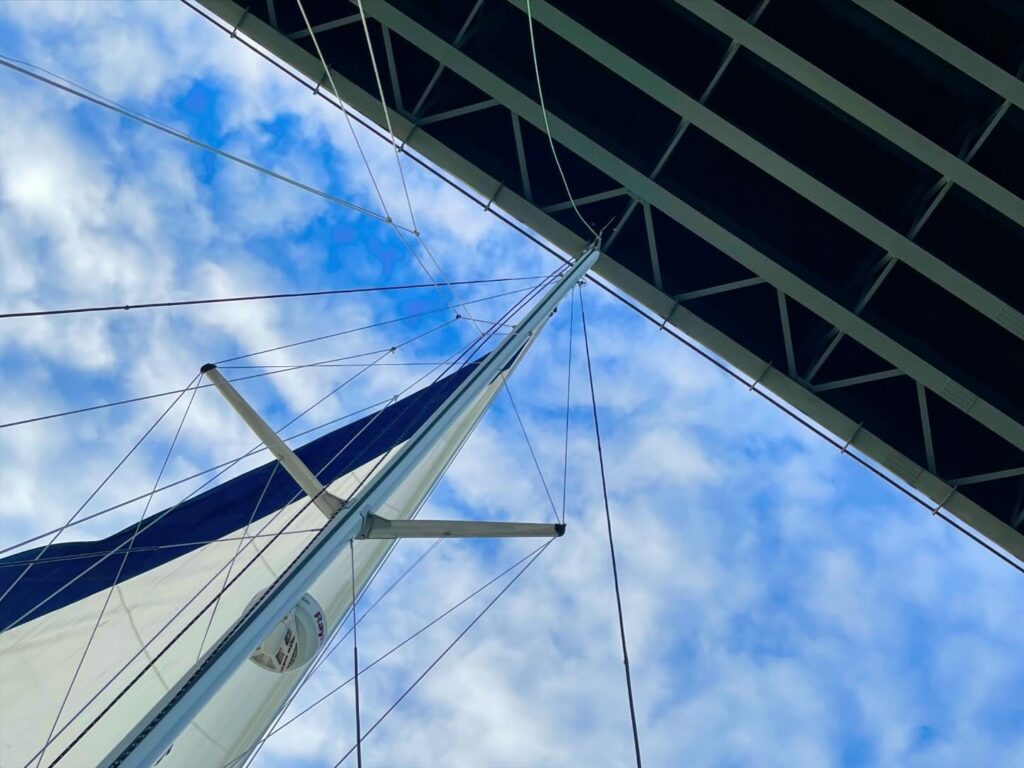
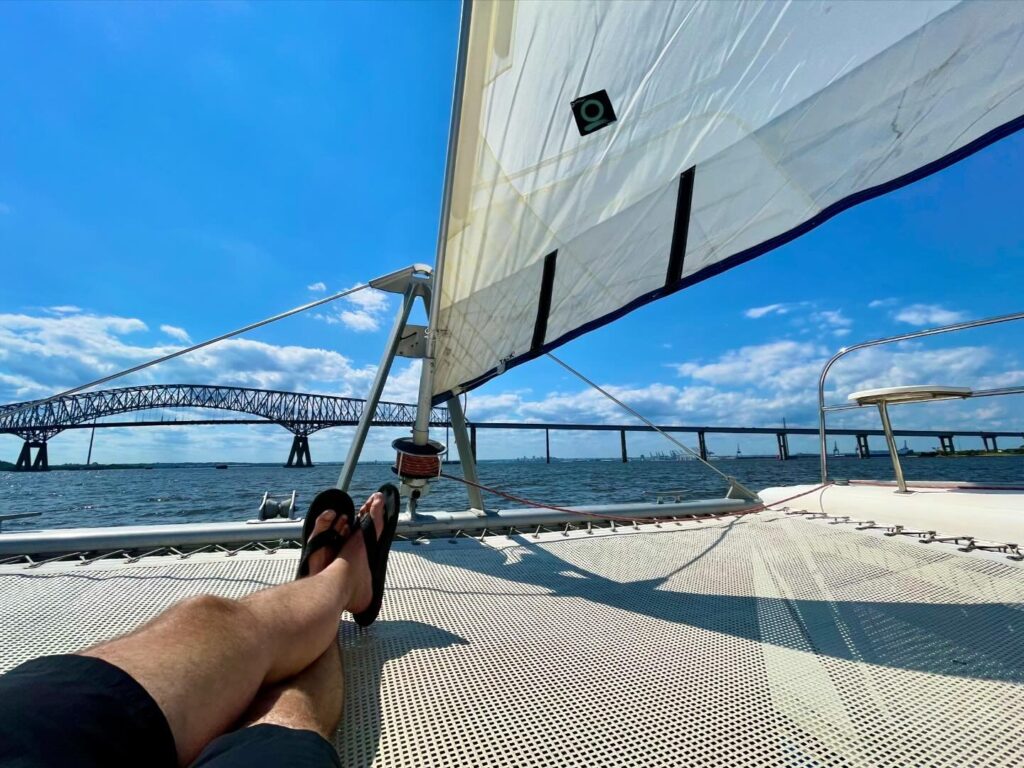
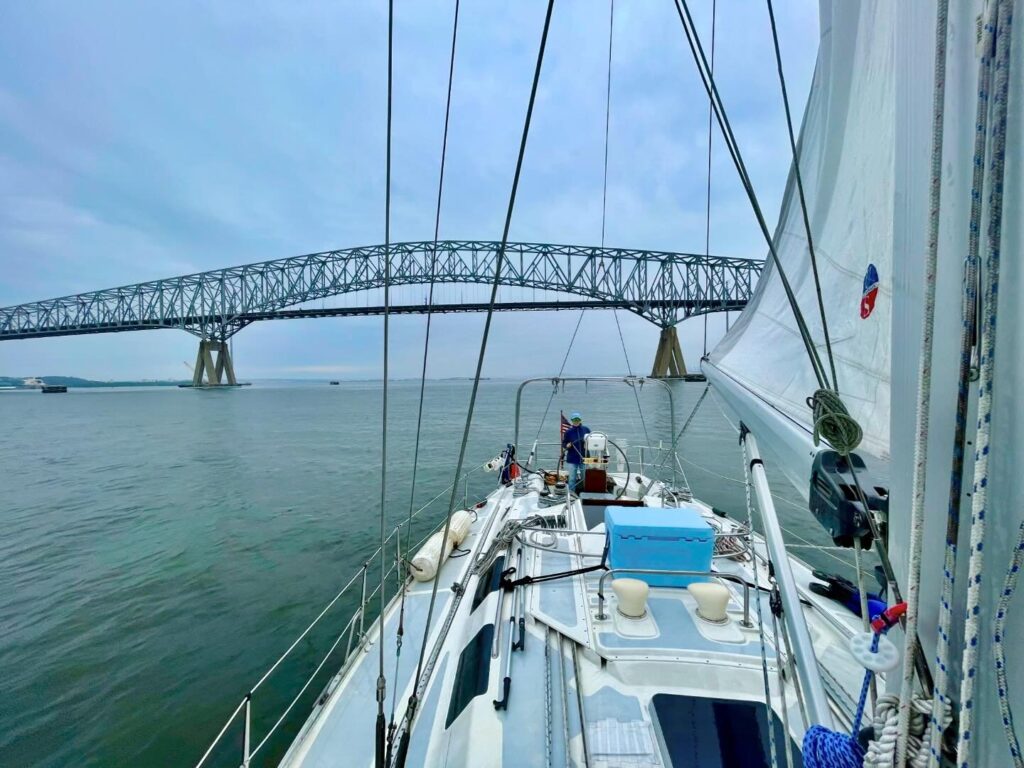
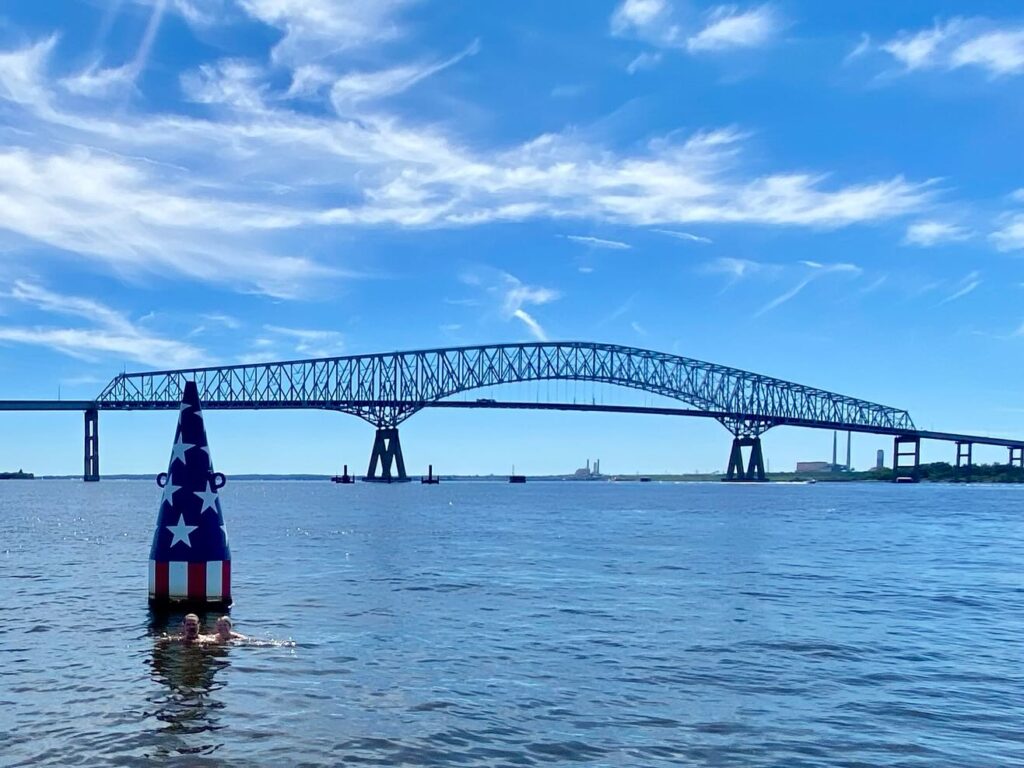
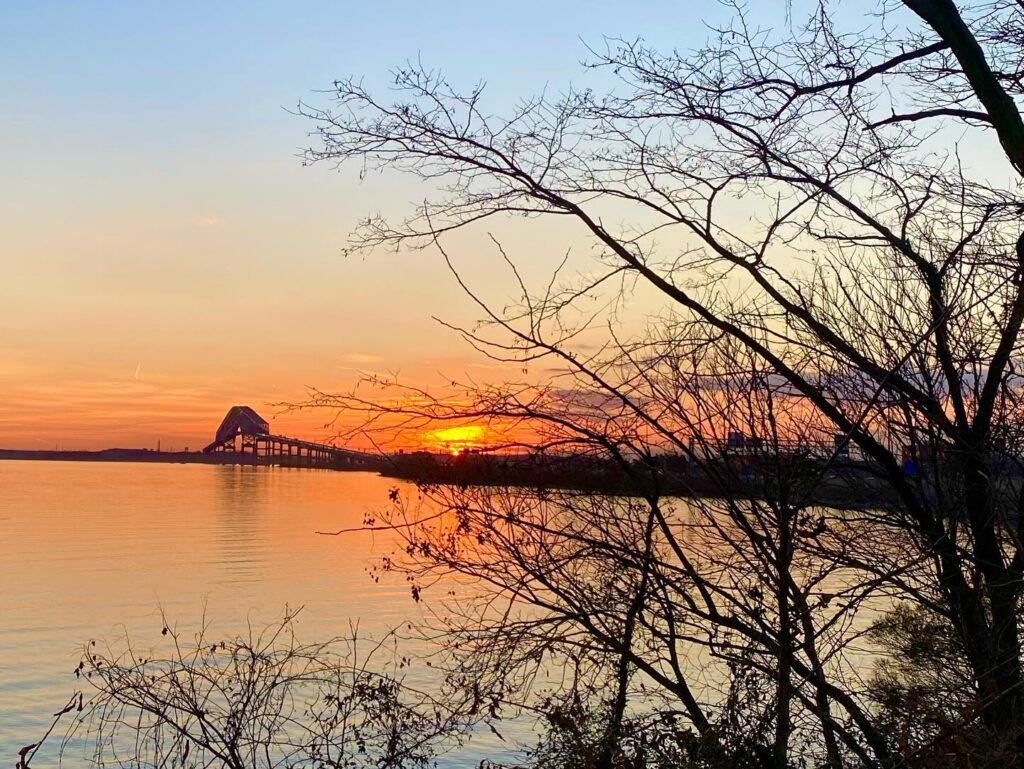
All photos courtesy of Capt. Bobby LaPin’s Boat Baltimore Facebook Page
“The first time I crossed under the Francis Scott Key Bridge in my grandfather’s little boat, I remember being equally terrified and excited. The sound of rumbling grates from the cars driving above mixed with the Bay slapping on those concrete columns, the large shadow cast across the Patapsco River from the bridge’s towering spans, and the smell of salt air and fish caused sensory overload. It was so very big compared to me and my grandfather’s little boat.
“As I grew, that bridge became the starting point for adventures on the water and the first real sign of home on my return. When I first sailed south to the islands from Baltimore, I looked at my wife, Alicia, as we passed under the bridge, saying, “Now, the journey begins.” And when we returned, tired, cold, and hungry, the first sight of Key Bridge warmed us up a little inside because we were finally home.
“Now, as a charter boat captain, spending almost ten hours a day sailing Baltimore Harbor, that bridge has become a symbol of my livelihood. When customers asked, ‘Where do you sail to?’, hundreds and hundreds of times I have answered, ‘To the bridge and back.’ And I have hundreds and hundreds of photos and videos to show for it.
“It was never just a bridge to me and the folks who work these waters. The Key Bridge was a symbol of great beginnings, a welcome home, and a way to feed our families. Thanks for the memories, old friend.”
From Photographer Mark Hergan, Deadrise Marine Photography
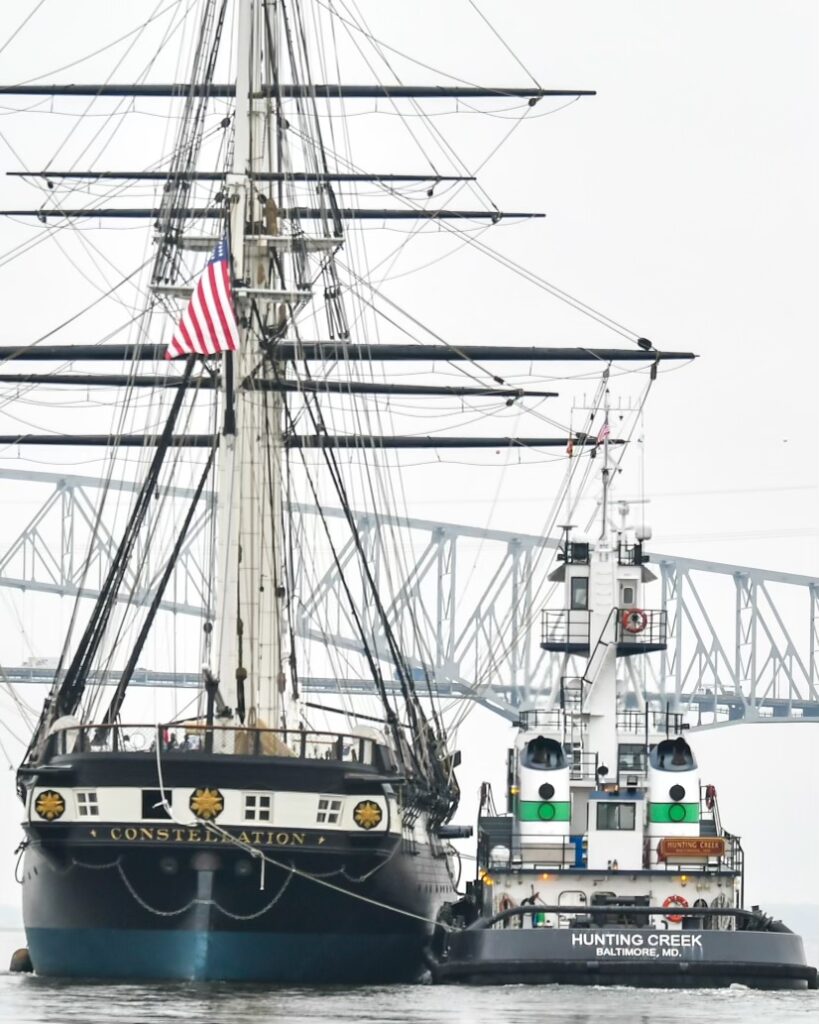
“I keep my boat on Bear Creek, and it’s three miles to the center span of the bridge. I probably spend 90-100 days [a year] on the Patapsco, and the majority of that time is spent photographing the Port and the watermen in the area. I love it because you just never know what you’re going to see. My favorite place to hang out is right next to the bridge because at Fort Carroll, the pilots run out to get onboard. I’ve trailed them just to photograph the pilots getting on and off the ships.
“I work in Owings Mills, Maryland, and from my house, I can go either way around the Baltimore Beltway to get to my house. Either way it’s the same distance. But I always chose to go over the Key Bridge. It’s just magnificent. Once you got up there, you could see everything. The port, the city, the ships, everything going on. And now, the view’s not there. You can’t do that anymore.
“As a photographer, the bridge was just the perfect backdrop for many pictures. The bridge gave pictures depth, meaning, and location. Right away, you knew where you were. It grounds my photographs, lets you know where I am and what I’m doing.
“The morning it came down, I woke up at about 5 a.m. I had a million messages that all said, ‘The bridge collapsed.’ What do you mean, ‘the bridge collapsed?’ Which bridge? There are lots of bridges between here and the Patapsco. ‘THE BRIDGE.’ I was in shock, running out of the house in minutes to get to the boat. I drove down I-95, launched the boat, and met a couple of friends on the way and picked them up. Coming around the corner of Bear Creek, the bridge was just … collapsed. It wasn’t there. And you could see two ramps going up in the air. I had been photographing the [container ship] Dali the day before, and there it was, with the Bridge collapsed on top of it. I was just in shock.”
From Jimmy Jernigan, Chesapeake Bay Powerboat Association
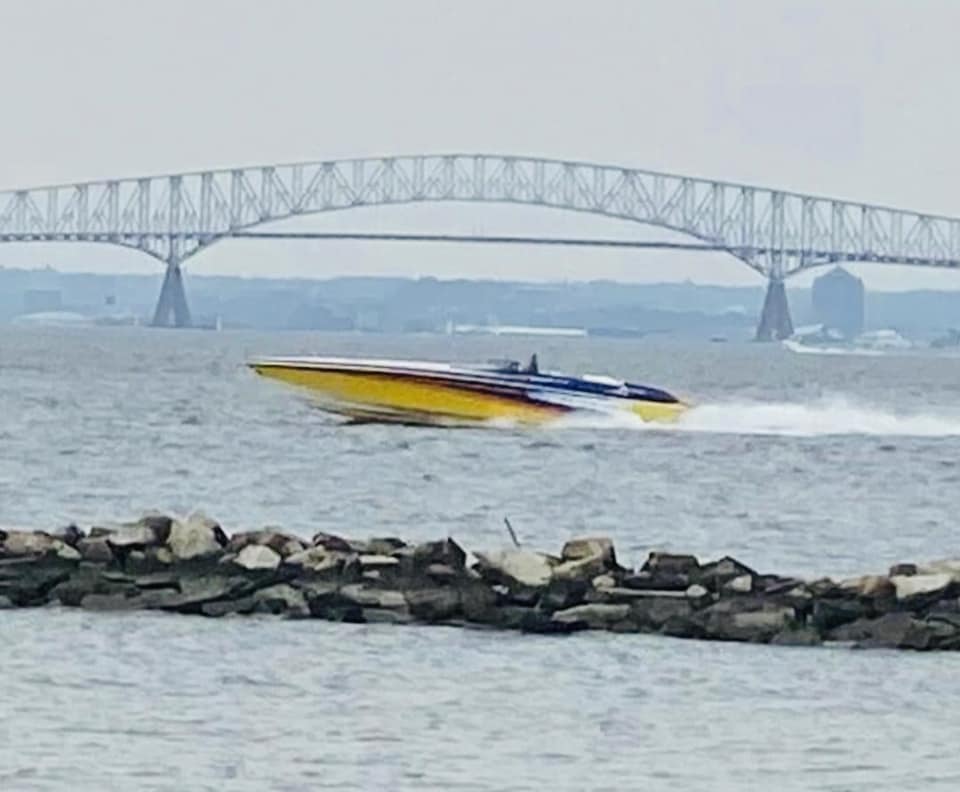
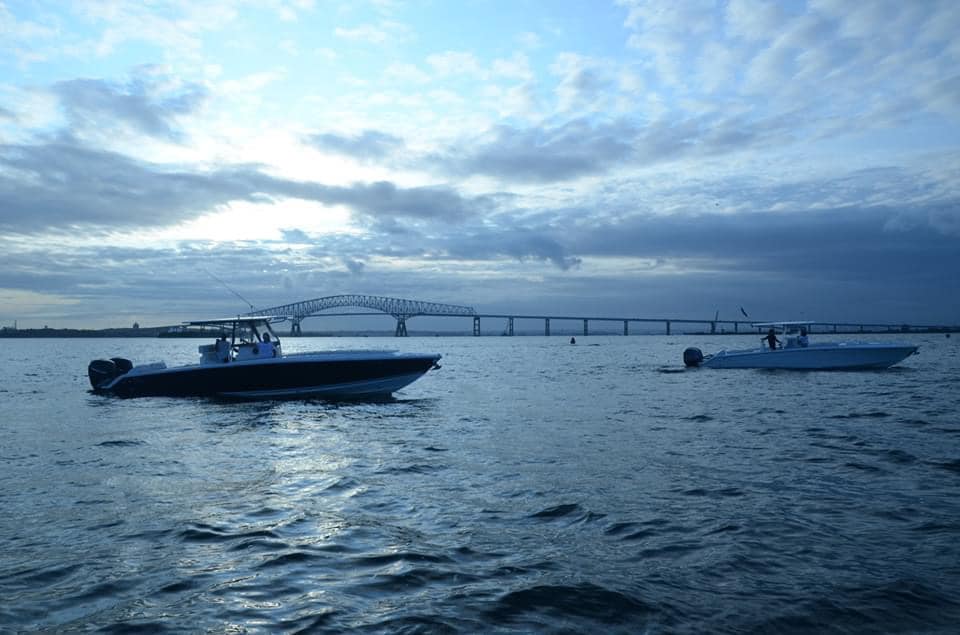
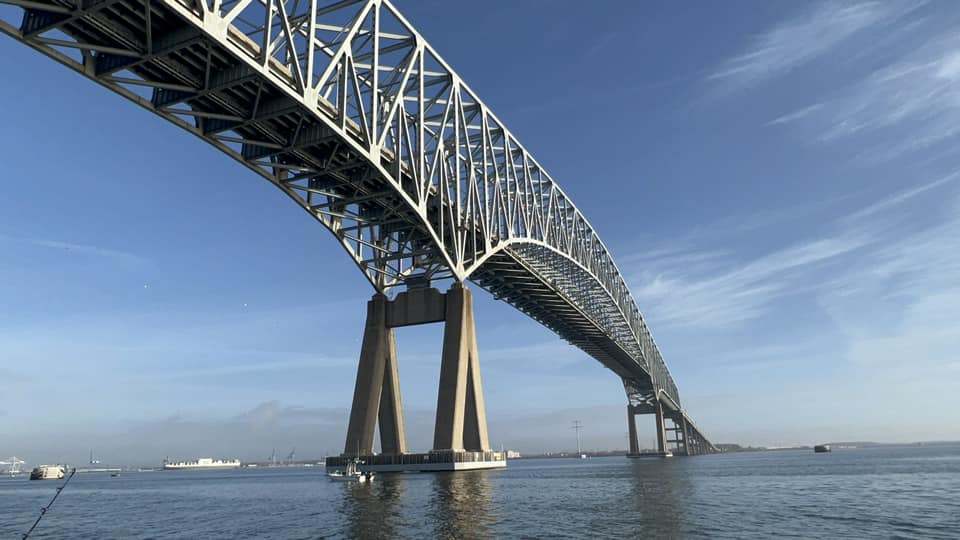
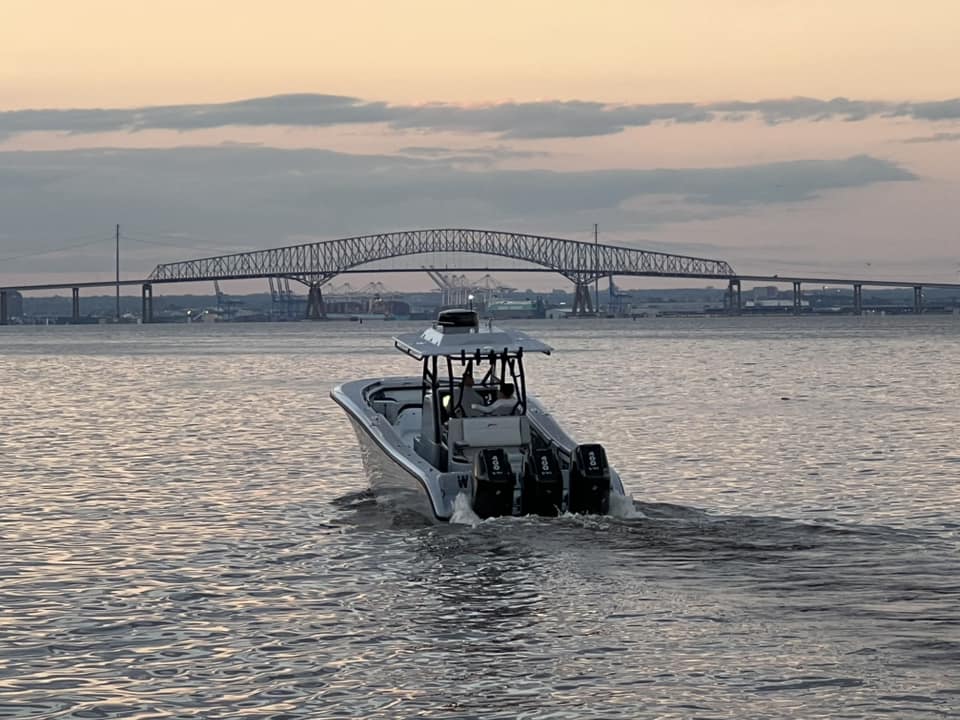
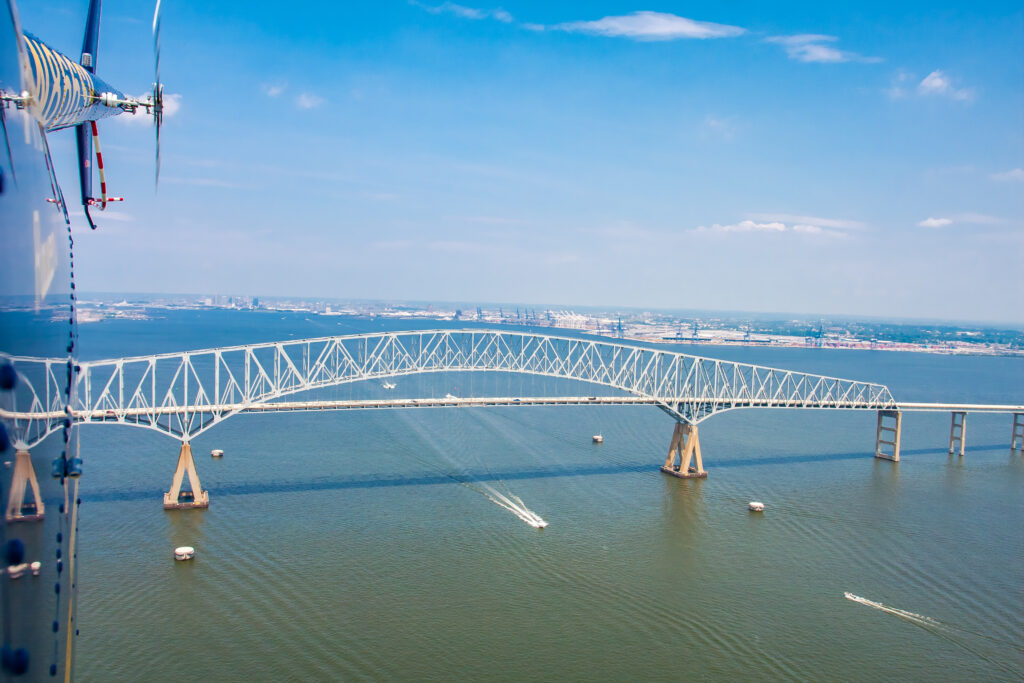
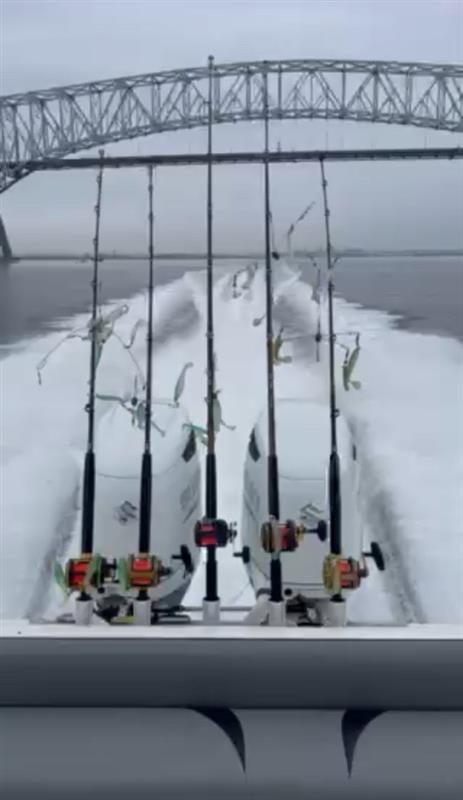

“When family and friends would come into town, we’d always take a ride to the Key Bridge. That’s our destination—we wouldn’t bother going out into the Bay. We’d ride to the bridge and come back. The island, the bridge, the backdrop … that was our trip.
“For me, I like to boat at night. If I was coming from anywhere down south, the bridge gave me light to come home. The bridge put so much light into the night sky, it was my go-to. And now, the sky is dark. My sister works for the Port. The night it happened, she started calling me. At 2 a.m., she was telling me, ‘I got called into work. The bridge collapsed.’ From my bed, I can see the bridge. As I looked out, it was gone. I got up and started watching the news, and at 4:30 a.m., I went down to the boat and got the heat on. Friends started calling me in the middle of the night, and I told them, ‘I have the boat warming up.’ When the sun came up, I was on the water with a boatload of people.
“That first day, it was just a disaster. It was devastating. The bridge was just gone. It was always so lit up, and now, as you come out of Bear Creek, there’s nothing. You see a boat sitting there with a pile of rubble sitting on it. It’s such an eerie feeling.”

